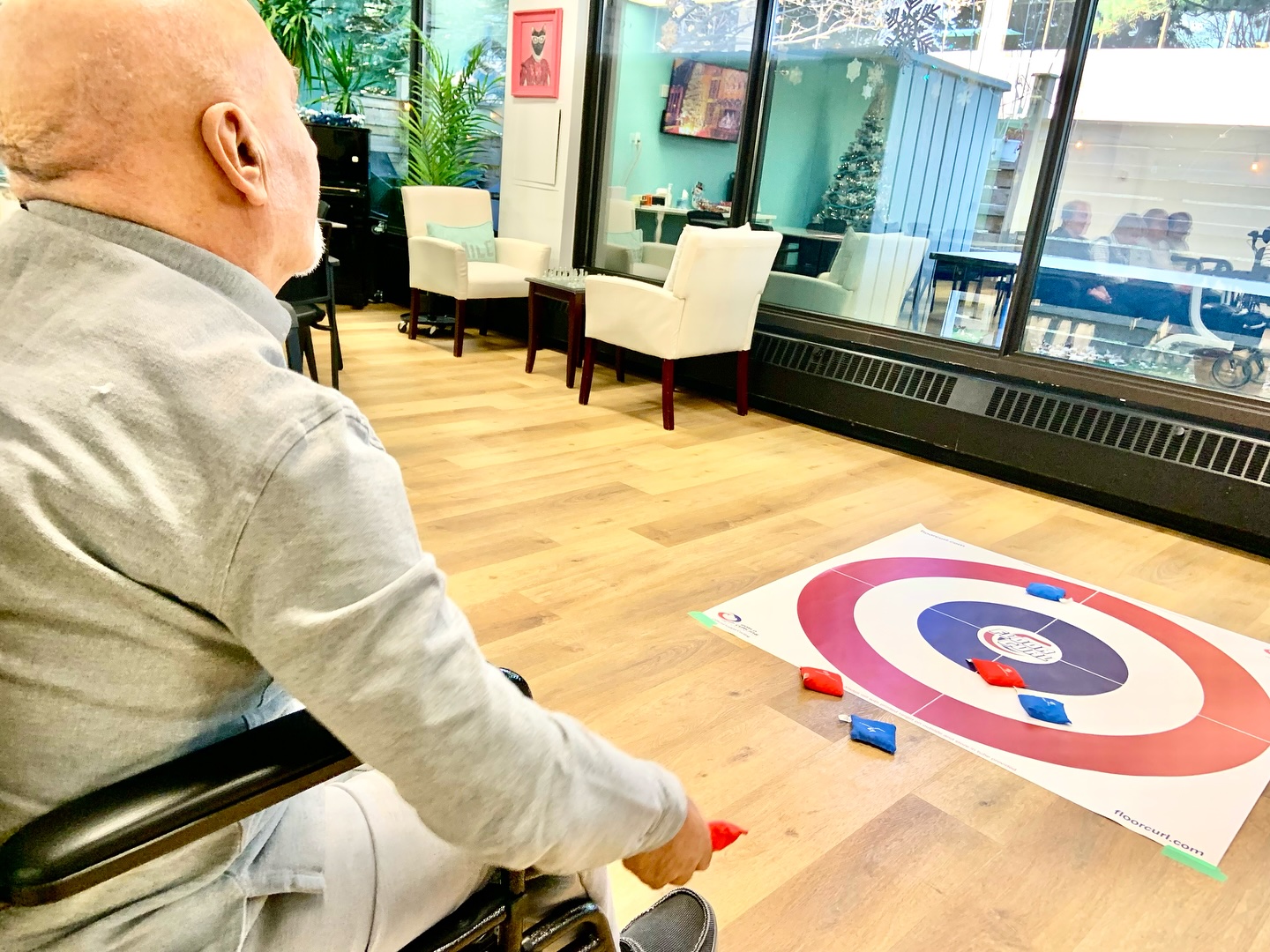Caring for a loved one living with dementia or Memory Loss can be both rewarding and challenging. One beneficial activity you might not have considered yet is stationary cycling. One study published in Medicine Journal suggests that gentle physical exercise, such as cycling, can improve physical health, stimulate cognitive function, and even enhance overall mood for those living with cognitive impairment.
This guide is designed to help care partners introduce stationary cycling to their loved ones safely and effectively. By following a series of manageable steps, you'll create a positive and enriching experience that doesn't just promote health but also builds connection.
Before You Begin
- Consult with a Healthcare Provider:
Before starting any new exercise routine, consult a healthcare professional to ensure that cycling is an appropriate activity for your loved one. They can offer guidance on any physical limitations or necessary precautions.
- Choose the Right Equipment:
Selecting the right equipment can make all the difference in ensuring safety and engagement during stationary cycling. Look for easy mounting and dismounting, a stable base for safety, and clear and simple display panels. You can also choose between these types of bikes:
- Recumbent Bikes:
Often referred to as a “sitting bike”, the recumbent provides safety for those who may have balance issues as the seat has a lower profile than regular stationary bikes.
- Upright Bikes:
As the upright stationary cycle allows for standing or sitting while in use, it is a good choice for people who have the core strength for balance.
- Pedal Exercisers:
For those with limited mobility, pedal exercisers are an excellent choice to ensure the health benefits of cycling are accessible to everyone.
- Set Up and Position the Bike Correctly:
Follow the manufacturer’s instructions when setting up the equipment. Once completed, adjust the seat height and handlebar position to reduce the risk of injury and increase the comfort level.
- Create a Safe Exercise Space:
Set up the stationary bike in an area with ample space. This can prevent accidents and encourage exercises daily. The space should be well ventilated, have adequate lighting, and be free from obstacles and potential hazards. Have water, towels, and any necessary medications within reach.
- Set Realistic Expectations:
Understand that everyone’s experience is unique. Some may adapt quickly, while others may need more time to get comfortable. Patience is key.
Building Trust and Interest
- Start with Simple Familiarization:
Allow exploration time to help your loved one feel comfortable with the equipment. While stationary cycling appears to be self-explanatory, it is important to take the time to explain and demonstrate how to use the equipment. Use encouraging language to instill confidence, courage, and inspiration.
- Make It Inviting:
Make the exercise session fun and energizing by creating playlists with music they love. Set up the stationary cycle in a familiar room or near a window with a stimulating view. Ensure the seat and surroundings are comfortable to encourage participation.
- Use Visual Cues and Simple Instructions:
Many people are visual learners. Use picture cards to demonstrate cycling steps and provide easy-to-follow and manageable steps when showing your loved one how to use the stationary bike. Communicate clearly to avoid confusion.
First Session Success Tips
- Find the Best Time to Introduce Cycling:
Choose times when your loved one is most alert and energized. Many people living with Memory Loss are more alert and receptive early in the morning as opposed to late afternoon or in the evening. Align sessions with their daily routines for familiarity and comfort.
- Start Small:
Begin with short sessions, around 2–5 minutes, to avoid fatigue or distractions. As with any exercise, starting with no resistance can be more rewarding. Focus on the motion rather than performance. While cycling is good exercise, you can maintain your loved one’s interest and motivation by providing a fun and engaging environment.
- Focus on Communication:
Use basic language when explaining to your loved one how to use the stationary bike and how to position their body during the exercise. Celebrate their efforts and participation by acknowledging all progress, regardless of any setbacks during the week. Keep the communication lines open by using gestures and facial expressions to encourage guidance throughout the exercise.
Common Challenges and Solutions
- Resistance to Trying:
Start with familiar cycling movements in a comfortable chair and encourage participation by making it a shared activity.
- Balance Concerns:
To ease concerns, only use stabilized equipment with support features like backrests and provide assistance until your loved one feels confident about using the bike.
- Loss of Interest:
When someone begins to lose interest in the same form of exercise, adding music or workout videos for entertainment can pique their interest. Set small, achievable goals for a sense of accomplishment.
Making It Fun and Engaging
- Incorporate Social Elements:
Exercising as a group makes the time go by faster and motivates people to continue moving. Encourage participation by inviting family members to work out at the same time. A little competition never hurts if it is all in good fun. Challenge your loved one to a race!
- Use Technology:
Use apps or videos that simulate outdoor cycling to maintain interest and motivation. YouTube offers great trail and biking simulations to enjoyable places all over the world that you can cycle along with. You can also track your loved one’s progress using exercise apps that record improvements in time, movement, and endurance.
Building a Routine
- Create a Schedule:
Establish regular times for cycling sessions. Start with sessions a few times a week and increase the number of sessions as your loved one becomes more comfortable with the routine.
- Track Progress:
Track all progress, and stagnant times, with a simple log sheet or notebook. For many people living with Memory Loss, seeing their progress displayed on a chart or in a diagram can help them stay focused on their goals.
- Maintain Motivation:
Offer small incentives like treats or certificates when your loved one reaches their goals. You can also create achievement certificates when they reach certain milestones. Document the journey by taking photographs throughout the weeks and months.
Safety and Monitoring
- Signs of Fatigue:
Keep your eye out for physical signs of fatigue such as shortness of breath, sweating, or discomfort. This could indicate that the exercise is too hard or too fast for the person to continue. If your loved one gets frustrated or confused, it is important to address these issues.
- Know When to Take a Break:
Pay attention to both verbal and non-verbal signs to know when to take a break or to stop the routine. Encouraging breaks is important since many people living with Memory Loss may not be able to express their feelings and may not realize the extent of their capabilities.
- Ensure Proper Hydration:
Prevent dehydration, muscle cramps, and fainting by always having water accessible. Remind your loved one to take regular water breaks, especially if they don’t communicate their need for water.
- Have an Emergency Plan:
While stationary cycling is a low-impact exercise, anything can happen. Have an emergency plan in place before beginning an exercise regime. Also, have emergency contact numbers on hand if needed. This includes emergency personnel, doctors, and family members’ phone numbers.
Advancing the Program
- Add Resistance Gradually:
Slowly adjust the resistance to enhance the benefits of cycling. You can also gradually increase the duration of each session as their endurance builds. Watch for facial expressions and specific body movements that might indicate that the resistance is too much.
- Incorporate New Challenges:
Incorporate cognitive activities, like counting games, during cycling to further stimulate the mind. Once your loved one is familiar and comfortable with cycling, branching out to local group sessions at community centres may be beneficial for them.
Interested in Learning About Our Engaging Programs? Contact Memory & Company Today!
By introducing stationary cycling thoughtfully and with patience, care providers can make a meaningful impact on the physical and mental well-being of their loved ones. Every small step, every single rotation of the pedals, is a step toward better health and greater connection.As the world’s first Respite Hotel, Memory & Company offers engaging activities like stationary cycling to enrich the lives of those living with Memory Loss. Our Respite Care Premium Day Program, long-term care, and short-term Respite Care accommodations are tailored to the individual needs of our Members and their care partners.
Call us at (905) 888-8808 to schedule a personal tour of our Oakville or Markham location.






















